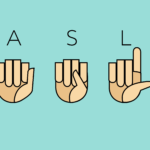During the short time I had at Harwin Elementary, I was able to see the development and growth of both myself and my group of students. Although during my time teaching my lessons, I was not working cognizantly within the mindset of the spiral of inquiry concept, reflecting back on my time there I can see the relevance of it in practice. Beginning with the “scanning” stage, I can remember my first day meeting and interacting with my group of four female grade 2 students. During this initial introductory lesson my aim was to get to know my group, present them with ample opportunity to communicate with me and each other, and engage in a fun activity that centered on an aspect of place. Within this stage of “scanning” I focused on getting to know my students. At this point I felt that the best approach was to learn from, and connect with these girls so that I could later create the rest of my lessons to best support their learning while also providing them with joy in our times together. This approach then shifted into the step of “focusing”. The grade 2 teacher, whose class my group was in, told us four teacher candidates that she would like our Social Studies content to be focused on Prince George in some way. This request provided a great directional prompt to focus student learning in. It was at this time that I decided that my teaching and lessons would focus on the students’ connection to the city of Prince George as well as center on the concept of community and what this can represent. During each lesson I had at Harwin, I lent my mind over to developing a hunch based on my learners. Each lesson provided new and greater understanding of my learners which provided me more information and inspiration to bring into the next week. The school Harwin, itself, presented a strong sense of community within the parent, staff, and student relationships. This understanding helped to “develop a hunch”, the following stage within the spiral of inquiry, I had pertaining to the knowledge of my small group. This led me to ask the question, “Do these students understand the fluidity of community, how these can be formed, and the true importance of them?” This hunch propelled me into creating the foundation of my groups’ learning. During this stage of learning I centered content to relate to the city of Prince George in a way that my learners could connect with. I also connected this to an aspect of community. For example, during the second lesson I did with my group at Harwin, I centered the learning on wild salmon. This content allowed us to learn more about some of the wildlife present in Prince George, understand how salmon contributed to our life and environment, and where we have a connection to salmon. I then linked the concept of community to the salmon themselves and the relationship between us and salmon; specifically, how salmon support us and how we support them. During each lesson I was able to notice developing understanding of the diverse constructs of community and how this affects our lives and the lives of others in a positive way. During the stage of “taking action” I can recall when my learners became enamored with wanting to use clay in a lesson. This desire arose after other students in their class in different groups were able to use clay. Due to my group’s overwhelming eagerness to partake in this form of learning I was pleased to oblige. I wanted to support their passions and create a meaningful learning experience for them as well. Although this changed my original plans, I thought it was extremely important to give my learners this opportunity to experience learning based on an inquiry solely belonging to them. The following stage of “checking” is one that I engaged in at the end of each lesson. I was always taking the time to prompt conversation centered within their learning and bringing forth components of the content covered. During these times I took note of what stood out for my learners, what did not, where they found joy in the learning, and what they connected to. Overall, my time at Harwin was incredibly helpful to my practice and my understanding of an inquiry-based mindset. Now that I have reflected on this time while utilizing the spiral of inquiry, I have gained a greater respect for this innovative framework of teaching. The ability to use reflexive thinking and adaptable practice has truly presented itself as a necessary tool to create positive learning experiences for students.

September 30, 2020
Harwin Elementary Spiral of Inquiry Reflection
sydneyb
Administrator
Posts by sydneyb
-

Ed 491: Final Practicum Reflection
April 9, 2021
-

Inquiry-Based Project: The Effects of American Sign Language in Accompaniment of Second Language Learning
April 7, 2021
-

Article Review: Personalizing Learning Through Project-Based Learning
April 5, 2021
-

#OneWord2021 . . . Present
January 4, 2021
-

Exploring Fine Art through Inquiry: Indigenous Artist Spotlight
October 20, 2020